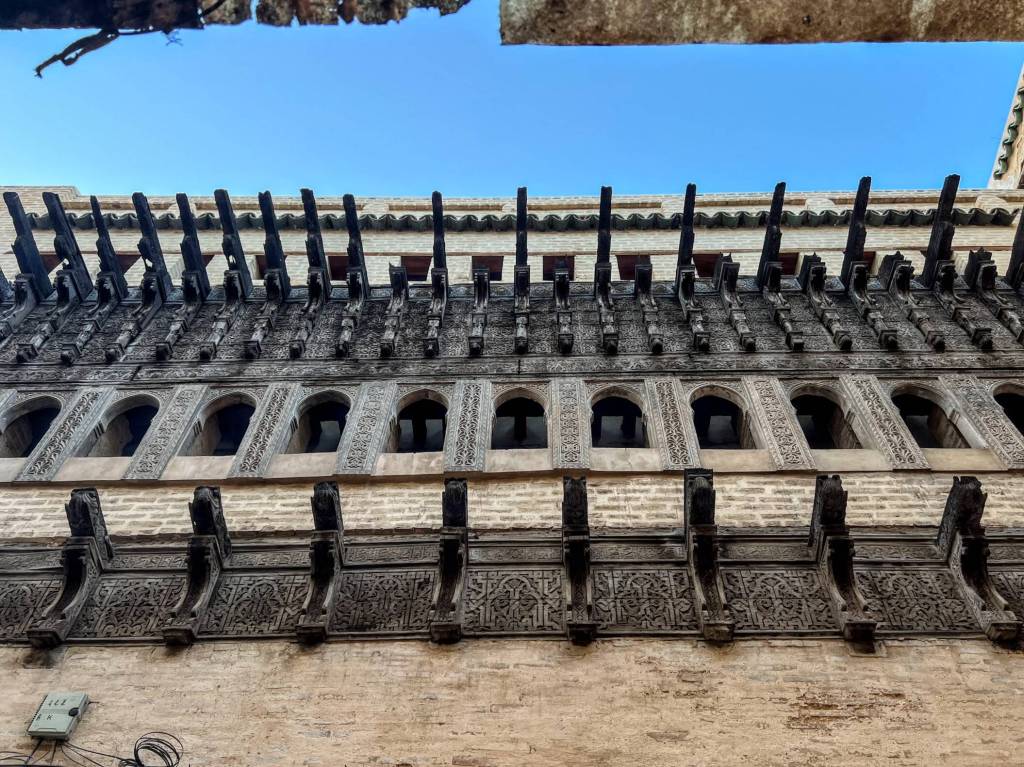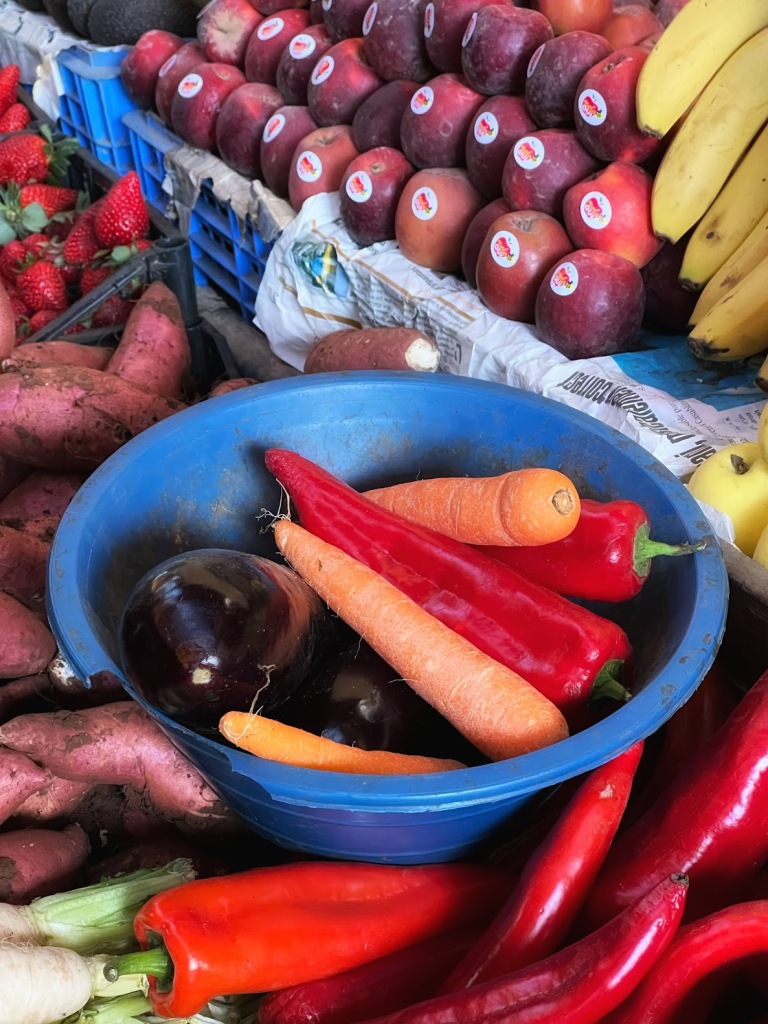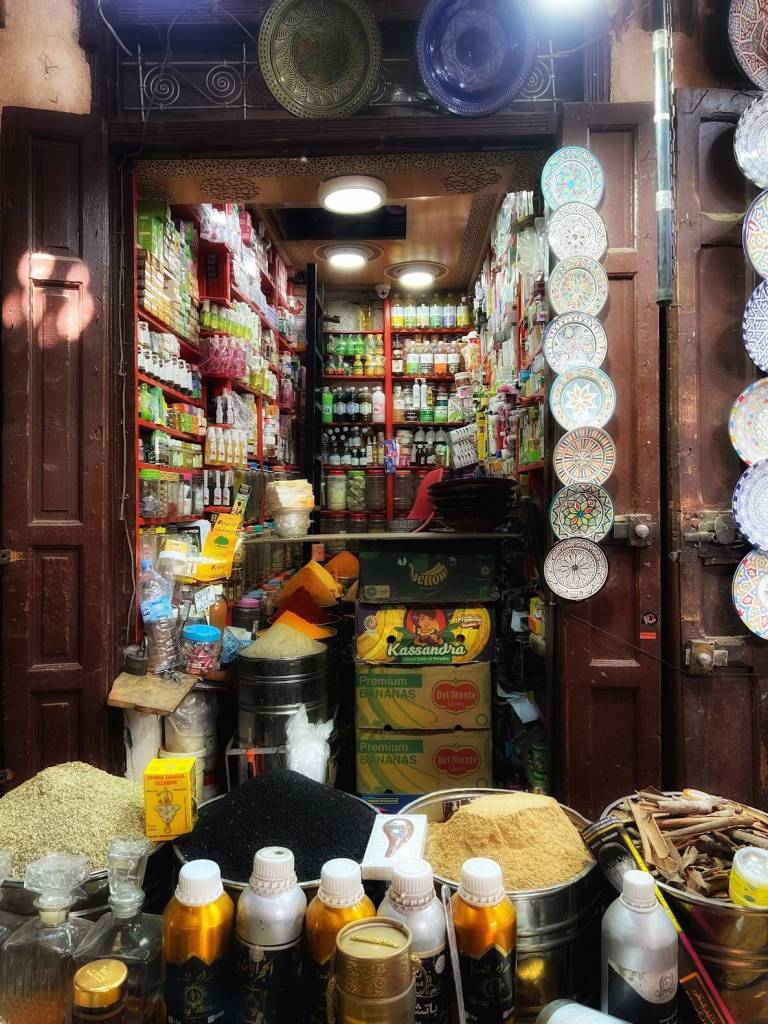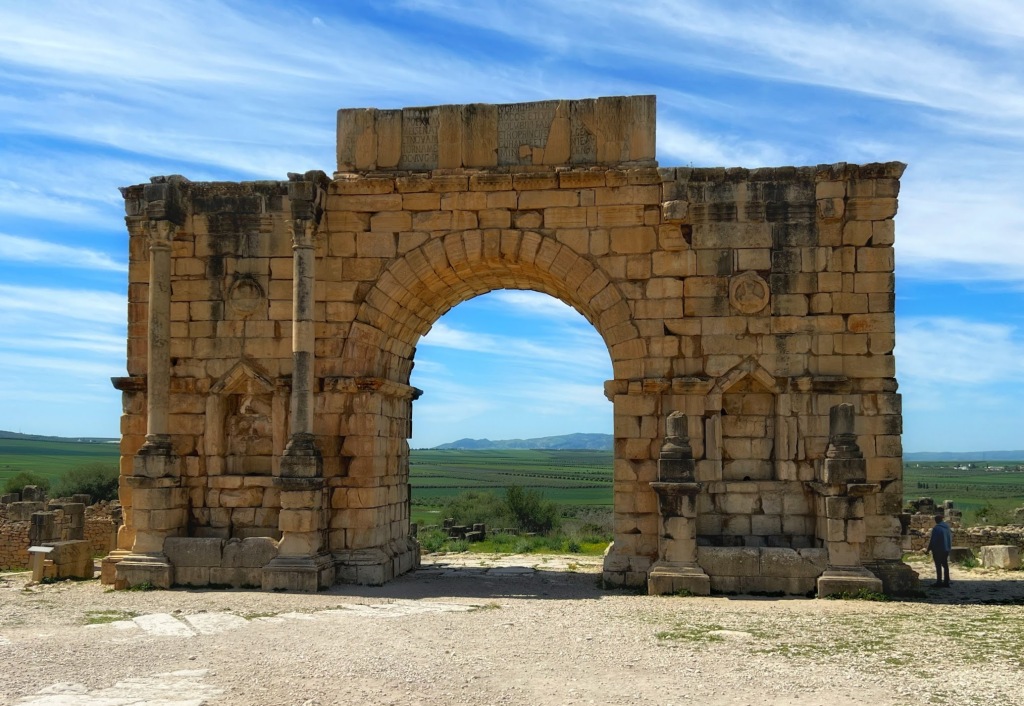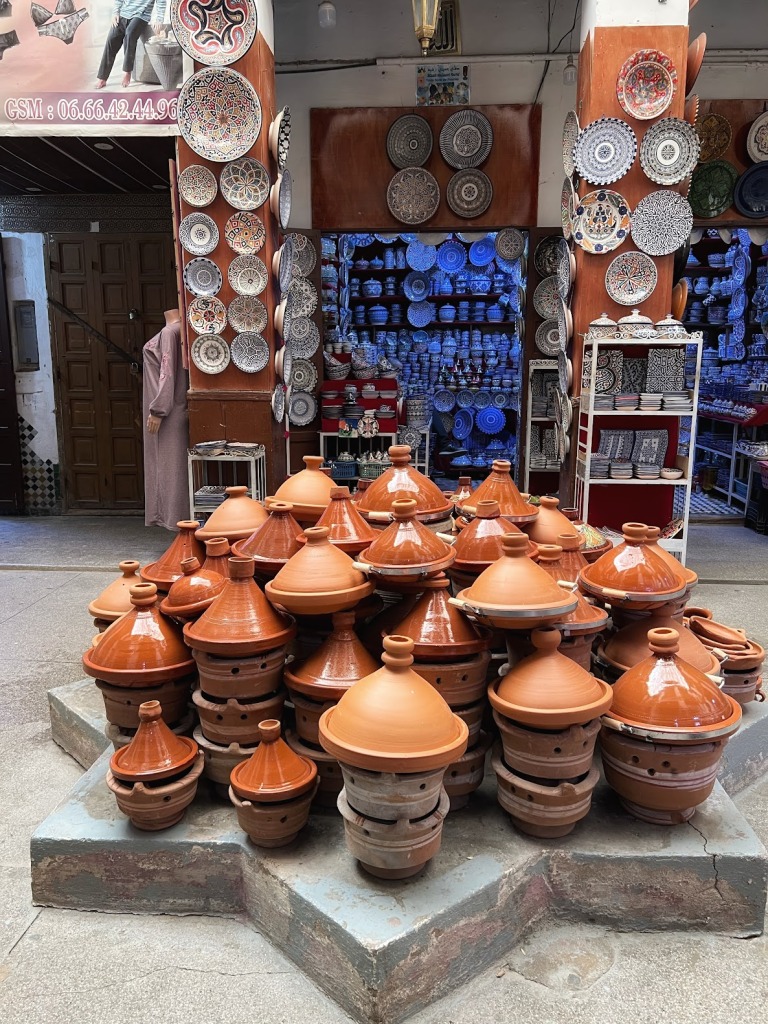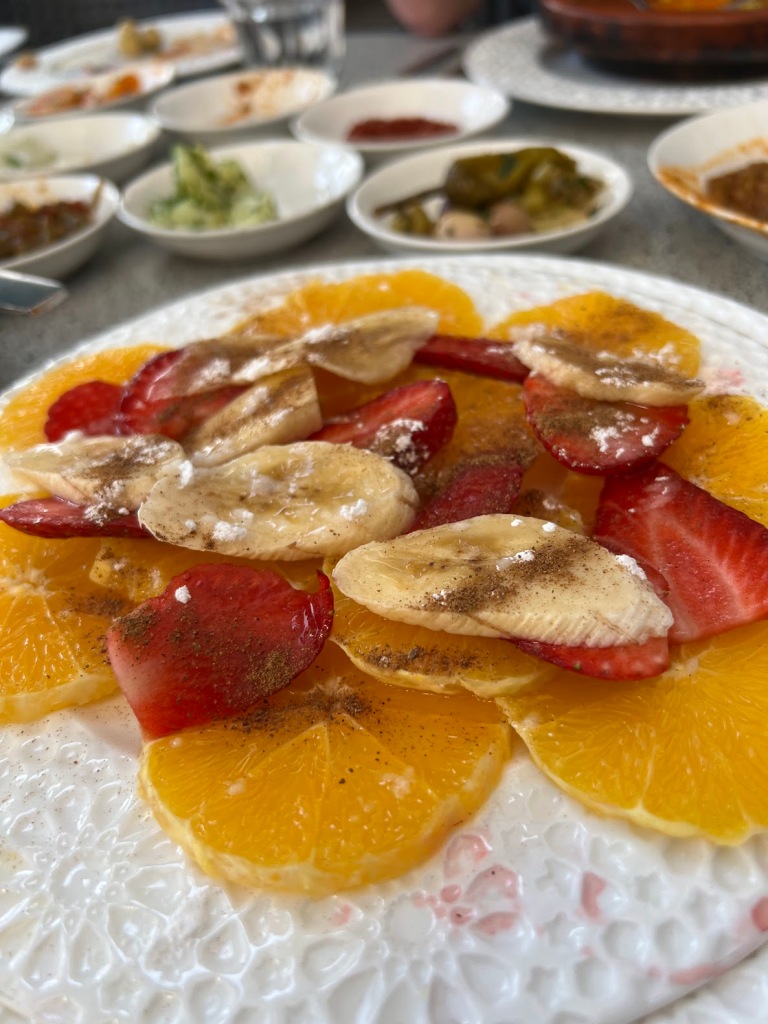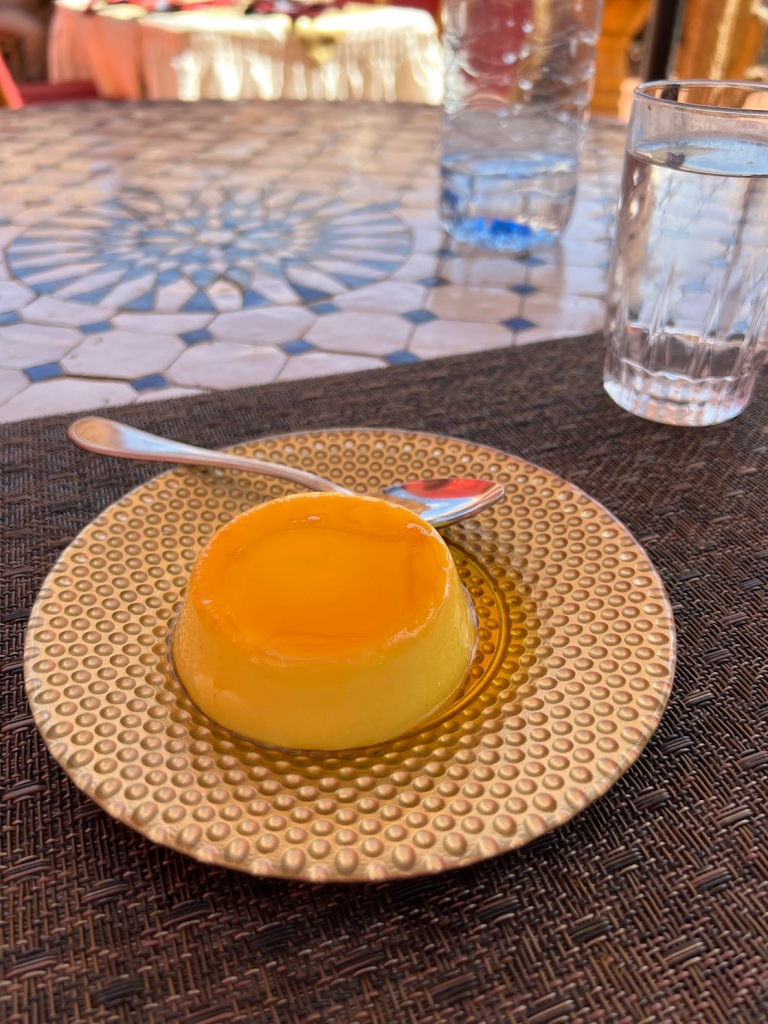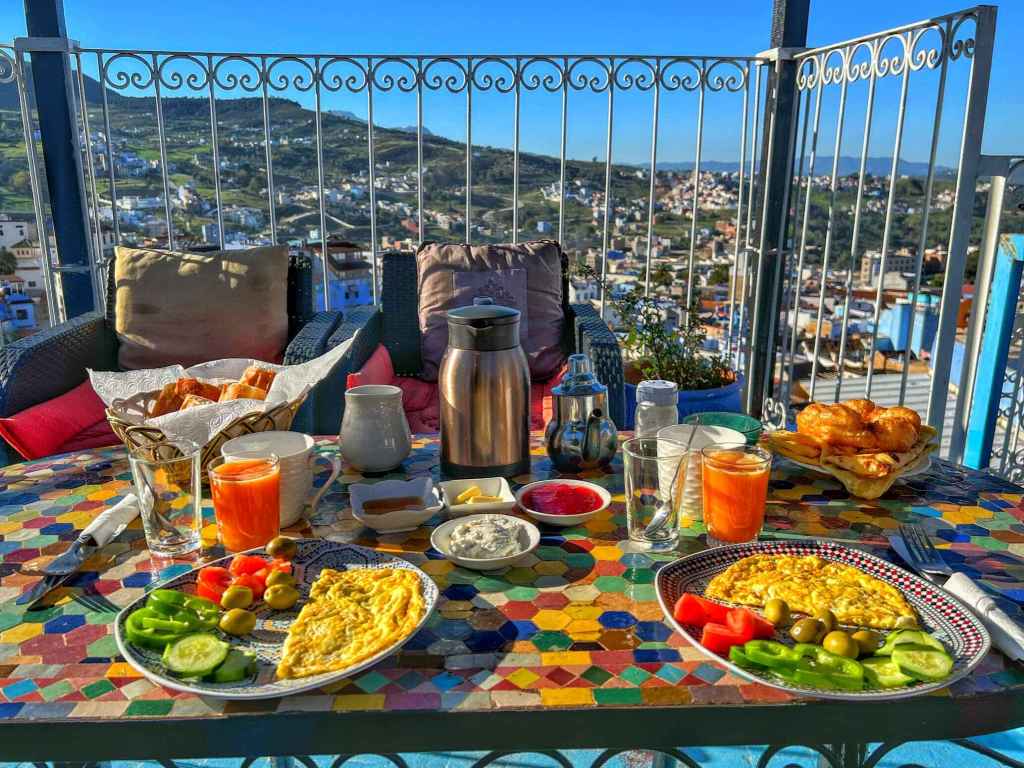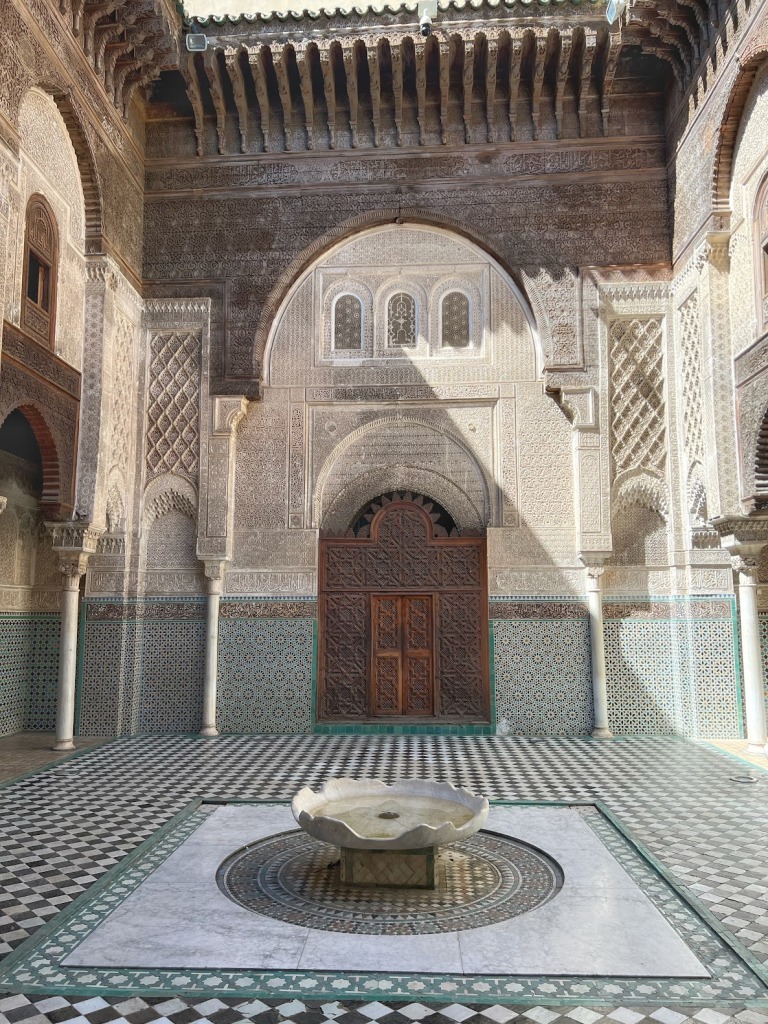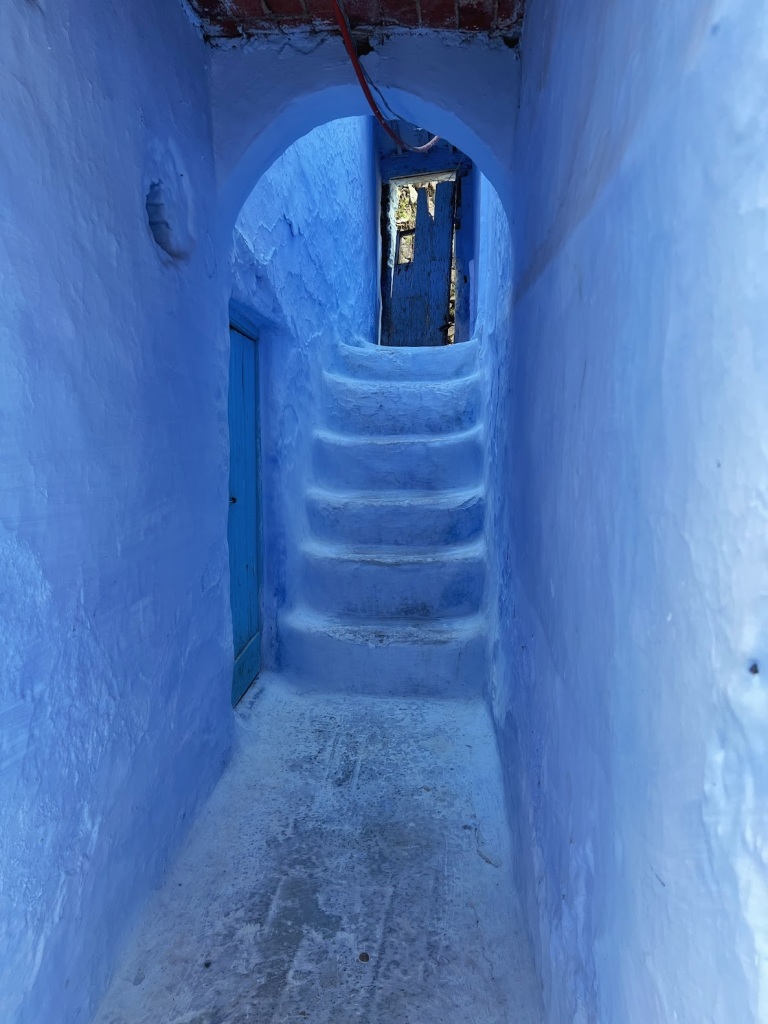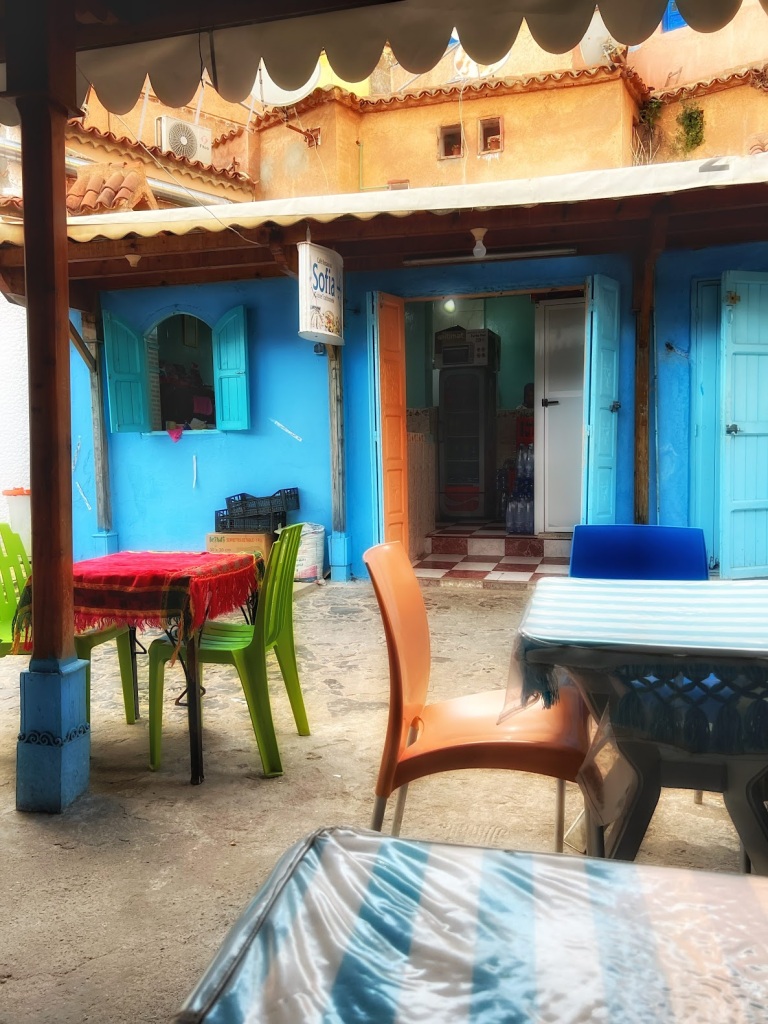In my final post about our week in Morocco, I’ll consider some of the cultural observations that I have not already touched on. The first, which we noticed everywhere we went, were how warm the people are. Ready with a smile, ready with mint tea (don’t refuse it!), ready for a conversation. (This is in contrast to where we are currently living. Ahem.)
People went out of their way to tell us that in Morocco things are peaceful because 1) the King looks after everyone and 2) all faiths and non-faiths are welcome and are part of the society. We heard stories that Jews left Morocco when Israel was founded, but that some Jews are returning to Morocco. The man at the ceramic workshop showed us this plate and explained how it encompasses three important cultures of Morocco.
The star in the middle is the Star of David, representing the Jews. The geometric patterns are Islamic, and the leaves represent nature found in Berber art.

We were in Fes on the first day of Ramadan. Our cooking teacher kept getting texts from friends and families wishing her a happy holiday. The markets were especially busy with the buying of honeyed sweets and other preparations for the holiday.
We were surprised on the Sunday before that our clocks had moved ahead during the night. Turns out that Morocco is on Daylight Savings Time year round, except during Ramadan. This makes the evening come earlier. On Wednesday evening at 8 p.m. a large canon set off 7 large explosions announcing the beginning of the holiday. We had seen the canon when we had gone to the panoramic view over the medina. Our guide had told us we would hear it, so we were not surprised.
On the surface, women are treated with respect. Our driving tour guide told me that he could not, in good conscience, let me open my own door, so I waited for him to run around each time I got out.
At the carpet shop, the man selling the wares kept telling Hal what a happy, good wife he had and how lucky he was. I think this is because sellers know that it is often the woman who makes the buying choices. I had a hard time knowing how to tell the seller that I was not interested in buying any of his beautiful rugs. If I had needed a carpet, I saw a number that I could have bought. The prices were reasonable. I just do not need a carpet. I felt quite awkward, but as we left, I thought that it was just another cultural learning experience.
We saw this kind of decoration on many doors. It’s The Hand of Fatima. It is supposed to give protection again The Evil Eye.

It’s hard to sum up a week in a completely different culture, but our trip to Morocco only underscores for me how important travel is. There are so many different ways to be in this world, and connecting with people and ideas only enriches our own lives.









